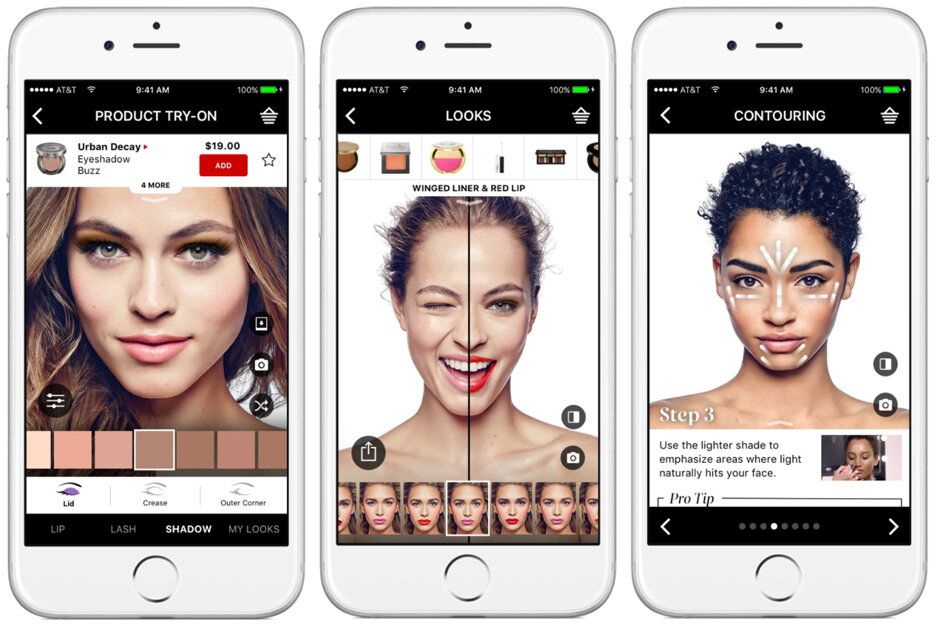Virtual Try-On Examples for Makeup Brands
Virtual try-on technology has been a game changer for the beauty industry. It allows customers to test makeup products virtually, without having to physically apply them. This not only saves time but also eliminates hygiene concerns. In this article, we will explore some of the top makeup brands that have embraced virtual try-on technology, how to use their tools, and what the future holds for this innovative approach to shopping.
The Rise of Virtual Try-On Technology
Virtual try-on technology has gained popularity in recent years, thanks to the advances in augmented reality and facial recognition software. This technology enables customers to virtually apply makeup products on their faces using a smartphone or computer camera, providing a realistic preview of how the products will look on them.
The Benefits of Virtual Try-On
The primary benefits of virtual try-on technology include:
- Convenience: Customers can try out various products and shades without visiting a store or dealing with messy makeup trials.
- Customization: Virtual try-on tools can suggest personalized product recommendations based on individual preferences and skin tone.
- Cost savings: Brands can reduce costs associated with product samples and testers.
- Increased customer satisfaction: Virtual try-on helps customers make more informed purchase decisions, leading to greater satisfaction and fewer returns.
Top Makeup Brands with Virtual Try-On
Several makeup brands have incorporated virtual try-on technology into their online shopping experience. Here are some examples:
Sephora
Sephora's Virtual Artist tool allows users to try on thousands of lipstick shades, eyeshadows, and more. The tool uses facial recognition technology to detect facial features and apply the makeup products accurately.
L'Oréal
L'Oréal's Makeup Genius app offers a wide range of virtual makeup try-on experiences, including products from its various brands like Lancôme, Yves Saint Laurent, and Urban Decay. The app also offers tutorials and personalized product recommendations.
MAC Cosmetics
MAC Cosmetics has a virtual try-on tool on their website, enabling customers to experiment with various products and shades. Users can try on lipsticks, eyeshadows, and even false eyelashes, all from the comfort of their own homes.

Maybelline
Maybelline's Virtual Try-On tool, available on their website, allows users to experiment with different makeup products, including lipsticks, eyeliners, and mascaras. The tool also provides personalized shade recommendations based on the user's skin tone.
Charlotte Tilbury
Charlotte Tilbury's Magic Mirror on their website offers a virtual try-on experience, allowing customers to try out different makeup looks and products. Users can choose from various curated looks, and the tool will apply the makeup virtually, giving a realistic preview of the final result.
How to Use Virtual Try-On Tools
Using virtual try-on tools is generally quite simple and user-friendly. Here's a step-by-step guide to help you get started:
Step-by-Step Guide
Accessing the Try-On Tool
- Visit the makeup brand's website or download their app.
- Look for a virtual try-on section or icon, usually found on product pages or a dedicated try-on page.
- Allow the tool to access your device's camera.
Navigating the Tool
- Choose the makeup product(s) you want to try on.
- Select the shades or variations of the product.
- Apply the makeup virtually on your face by following the on-screen instructions.
Saving and Sharing Results
- Save your favorite looks or products for future reference.
- Share your virtual try-on results with friends on social media or through messaging apps.
The Future of Virtual Try-On Technology
As virtual try-on technology continues to advance, we can expect further improvements and new features in the coming years:
Improved Accuracy
Future virtual try-on tools may provide even more accurate makeup application, taking into account factors like lighting, skin texture, and facial expressions for a more realistic preview.
Expansion into Other Industries
The success of virtual try-on technology in the makeup industry may inspire other industries, like fashion, accessories, and eyewear, to adopt similar tools to enhance the online shopping experience.New Paragraph

Virtual try-on technology has revolutionized the way we shop for makeup, offering convenience, customization, and a more satisfying shopping experience. Brands like Sephora, L'Oréal, MAC Cosmetics, Maybelline, and Charlotte Tilbury are leading the way with their innovative virtual try-on tools. As technology continues to evolve, we can expect even more exciting developments in the future.
FAQs
Are virtual try-on tools accurate?
While current virtual try-on tools provide a realistic preview of makeup products, there may be minor discrepancies due to factors like lighting and screen settings. However, these tools are continuously improving in accuracy.
Is it safe to use virtual try-on tools?
Yes, using virtual try-on tools is generally safe as they only require access to your device's camera. Be sure to use tools from reputable brands and avoid downloading suspicious apps.
Can I use virtual try-on tools on all devices?
Most virtual try-on tools are compatible with smartphones, tablets, and computers. However, it's always a good idea to check the brand's website or app for specific device requirements.
Do virtual try-on tools work for all skin tones?
Many virtual try-on tools are designed to work with a wide range of skin tones. Some even offer personalized shade recommendations based on your skin tone.
Are virtual try-on tools free to use?
Yes, most makeup brands offer their virtual try-on tools for free as part of their online shopping experience.
TALK TO A PRO
We're here to bring your brand to life!
Stay Connected with BrandXR
Create Augmented Reality for Free!
Create, Publish, and Measure 3D Augmented Reality Experiences Without Having to Code.














